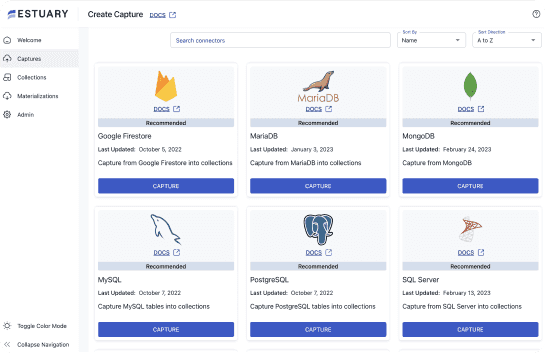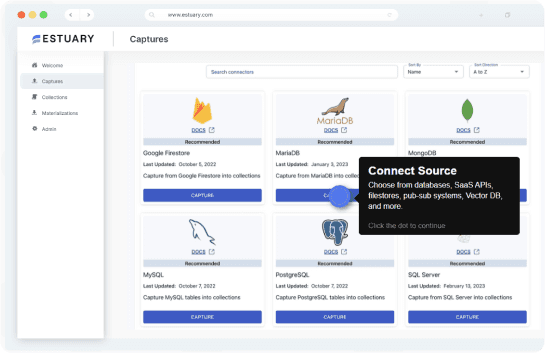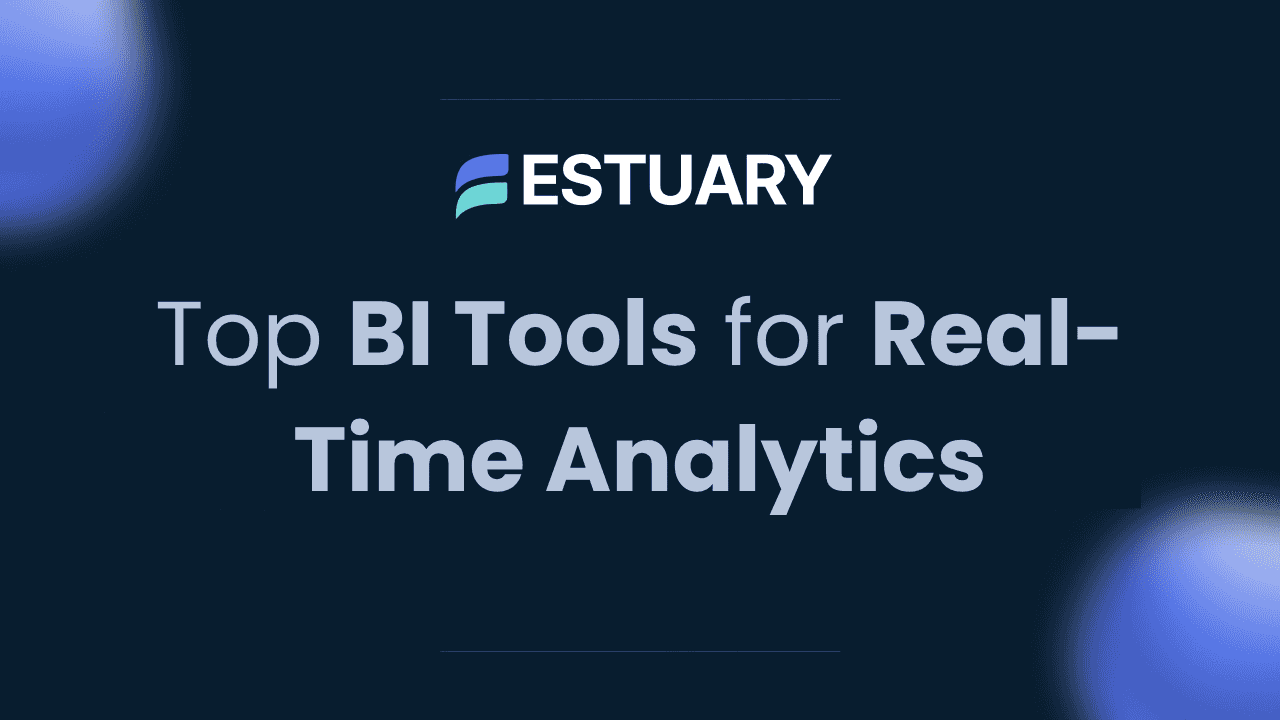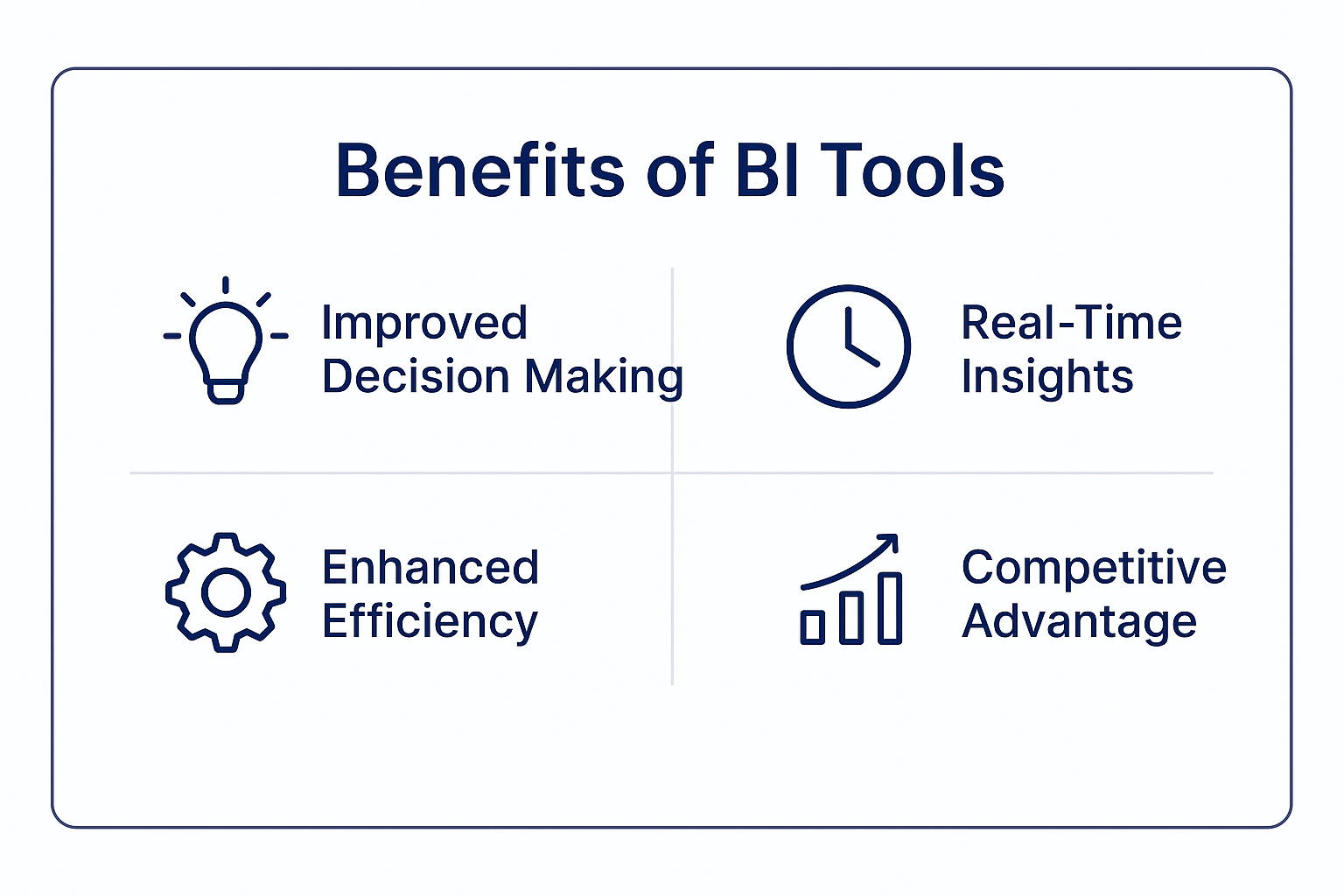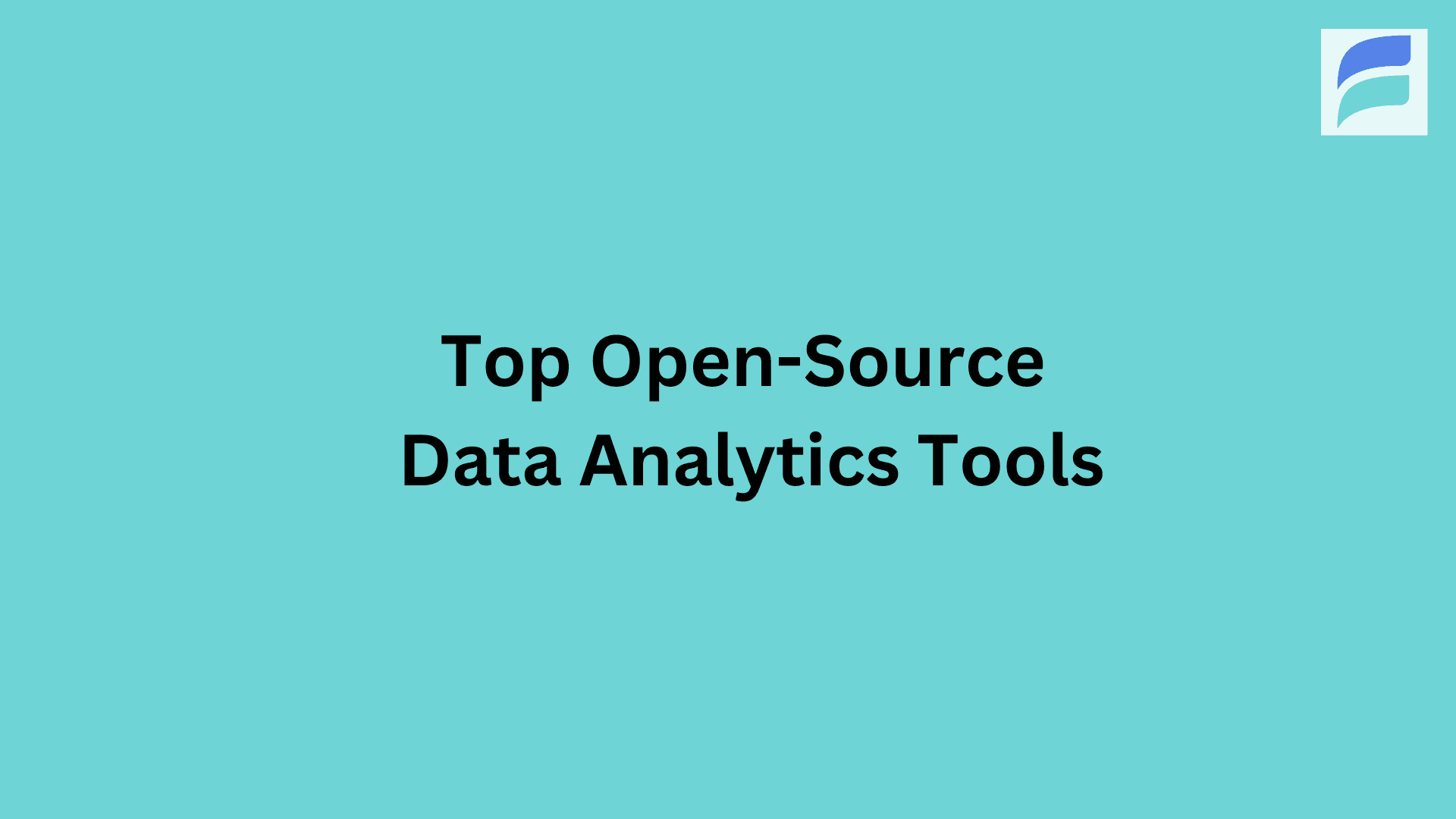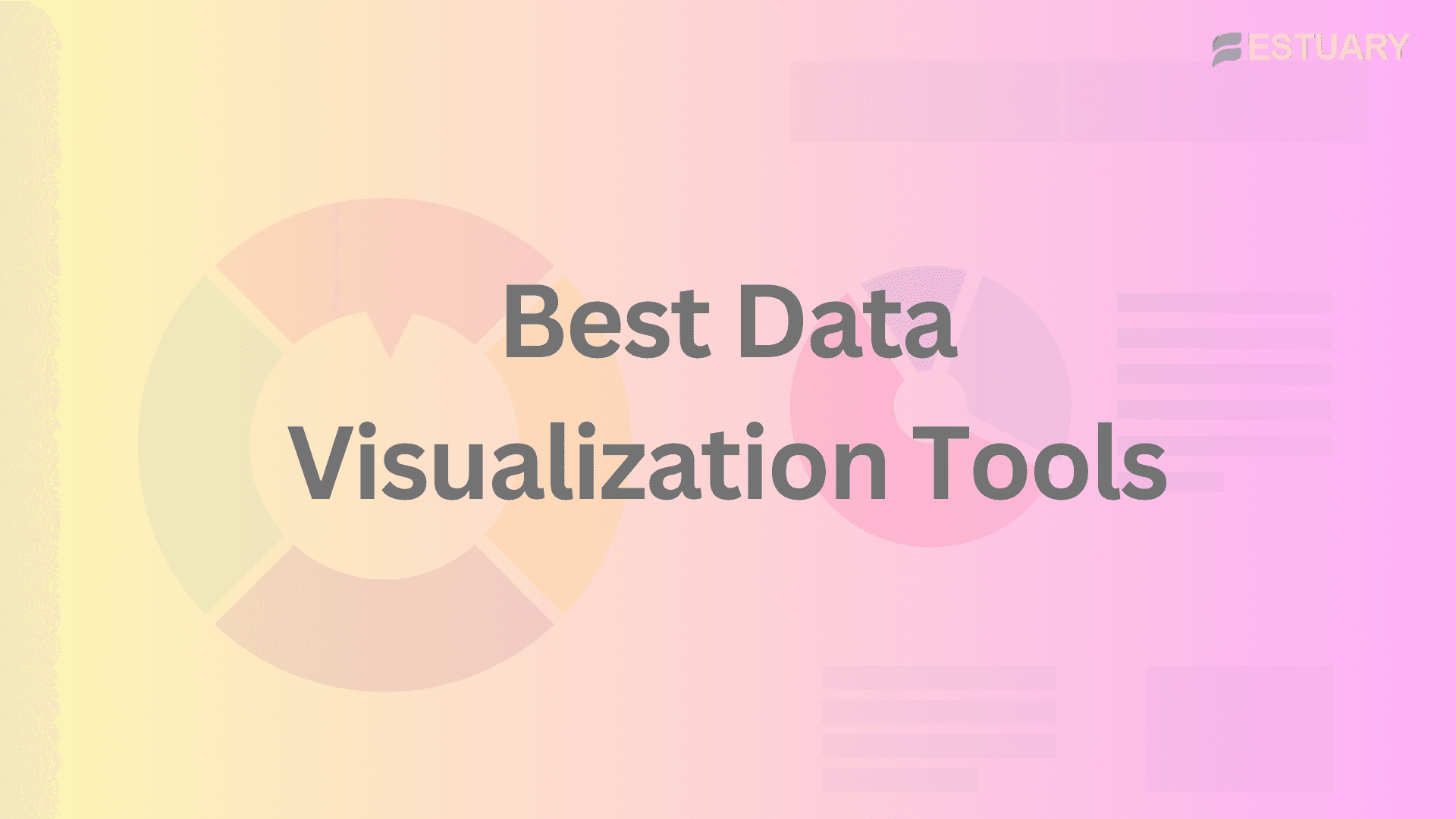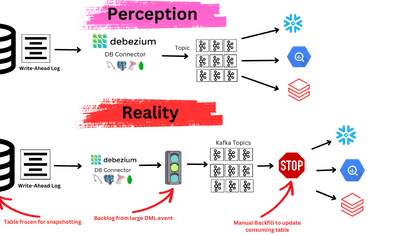
What good is a beautiful dashboard if it shows yesterday’s data?
As businesses move faster and become more data-driven, the pressure is growing on analytics teams to deliver insights not just accurately, but instantly. Traditional business intelligence tools were built for scheduled reports and static dashboards. But today’s users want more. They expect alerts on anomalies as they happen. They want KPIs that reflect what’s going on right now, not what happened last week.
That’s where real-time BI tools come in.
But here’s the tricky part. Most platforms that label themselves as BI tools are not truly real-time out of the box. Some rely on overnight batch updates. Others offer fast queries, but only if connected to the right infrastructure. So how do you figure out which tools are actually real-time ready?
In this guide, we’ll break down 9 business intelligence tools that support real-time analytics when set up the right way. You’ll learn how each tool works, how it handles data freshness, and what it takes to make your dashboards reflect reality as it happens.
By the end, you’ll know which BI tools are worth exploring if you want faster, smarter decisions powered by always-up-to-date information.
What Is a Business Intelligence (BI) Tool?
At its core, a business intelligence tool helps you understand your data so you can make better decisions. These tools gather information from different sources, organize it, and present it in ways that are easy to analyze. Think dashboards, charts, reports, and visualizations.
But BI tools do more than just make data look nice. They let business teams ask questions like:
- How did sales perform last quarter across regions?
- What’s our current inventory level for top products?
- Which marketing channels are driving the most conversions?
Instead of digging through spreadsheets or waiting for IT to run custom queries, users can explore the data themselves using intuitive interfaces. Some business intelligence tools even allow for natural language queries, making insights even more accessible.
Modern BI platforms support a variety of data sources, including cloud data warehouses, relational databases, and even spreadsheets. But here’s the catch. Just because a tool can connect to data doesn’t mean that data is fresh. That’s why understanding how BI tools handle data refreshes is just as important as the features they offer.
Before we explore the tools themselves, let’s take a quick look at why real-time business intelligence matters more today than ever.
Benefits of Real-Time Business Intelligence
Why does real-time data matter in the world of business intelligence?
For starters, timing can make the difference between catching a problem early and reacting too late. When your dashboards update in real time, you can respond to what’s happening in the moment, not after the fact.
Here are some of the key benefits that real-time business intelligence tools bring to the table.
1. Faster Decision-Making
When your data updates automatically and continuously, teams can act on insights immediately. Whether it’s reallocating budget, adjusting pricing, or troubleshooting performance issues, the sooner you know, the faster you can move.
2. Improved Operational Awareness
Real-time BI tools help teams stay in sync with live events. This is especially critical in industries like logistics, finance, and e-commerce where conditions can shift minute by minute.
3. Reduced Risk and Downtime
Spotting anomalies or sudden drops in KPIs as they happen allows you to fix issues before they escalate. This kind of visibility reduces risk and helps prevent costly errors or system failures.
4. Enhanced Customer Experience
Seeing real-time support ticket volume, website behavior, or sales activity allows teams to adapt on the fly and create better customer experiences.
5. Competitive Advantage
Businesses that use real-time business intelligence tools often outperform those relying on outdated reports. They can react to market trends, customer behavior, and operational changes as they unfold.
Real-time BI isn’t just about speed. It’s about staying aligned with reality. When your data reflects the present, your decisions are grounded in what’s actually happening, not what happened hours or days ago.
What Makes a BI Tool Real-Time Capable?
Not all business intelligence tools are created equal when it comes to real-time functionality. Some tools offer real-time dashboards in theory, but the reality depends on how they’re set up and where the data is coming from.
So what actually makes a BI tool capable of supporting real-time analytics?
Let’s break it down.
1. Live or Low-Latency Data Connections: To be real-time, the BI tool needs to pull in fresh data either continuously or at very short intervals. Some tools support live connections to databases or data warehouses. Others rely on scheduled refreshes, which can introduce delays of minutes or even hours.
2. Compatibility with Real-Time Data Sources: Even if a tool supports live dashboards, it still needs access to real-time sources. These might include change data capture streams from transactional databases, cloud-based event data, or API-based inputs from SaaS platforms.
A BI tool that connects to a real-time database like Snowflake or BigQuery can update dashboards quickly. But if the data in that warehouse is only updated once a day, the insights will still be stale.
3. Flexible Data Integration Options: Real-time performance also depends on how well the tool works with modern data pipelines. Some tools allow for streaming inputs or API-based materializations. Others require periodic batch uploads.
4. Efficient Query Execution: Finally, a tool must be able to process queries fast. Real-time insight is only useful if it’s delivered quickly. Tools that rely on complex joins or heavy transformations might struggle to keep up.
In short: A BI tool can only be as real-time as the data flowing into it. The tool itself might support low-latency features, but without a strong data pipeline behind it, you’ll never see true real-time performance.
Now that we know what to look for, let’s explore nine business intelligence tools that support real-time analytics when configured the right way.
9 Business Intelligence Tools That Support Real-Time Data
Many BI tools claim to be fast, but only a few truly support real-time data workflows when paired with the right infrastructure. In this section, we’ll take a closer look at 9 business intelligence platforms that are real-time capable and explain how they handle data updates.
Let’s begin with one of the most widely used tools in the market.
1. Tableau
Tableau is one of the most popular business intelligence tools for creating rich, interactive dashboards. Known for its user-friendly interface and powerful visualizations, Tableau is often the go-to platform for analysts and business teams alike.
But can Tableau handle real-time data?
The answer is yes, with the right configuration.
Tableau offers two key data connection modes:
- Live connections: Tableau connects directly to your database or data warehouse and queries it in real time. This setup is best for real-time dashboards, assuming the underlying data source is continuously updated.
- Extracts: Tableau pulls data into its own in-memory engine on a schedule. While faster for some types of analysis, this approach is not real-time.
So if you want real-time dashboards in Tableau, you need a live connection to a fast, continuously updated data source. That could be something like Snowflake, PostgreSQL, or Google BigQuery.
Use cases for real-time Tableau:
- Monitoring operational KPIs like order volumes or revenue in near real time
- Tracking support ticket queues as they grow throughout the day
- Visualizing sensor or IoT data in logistics or manufacturing
When Tableau is connected to a modern data source that supports frequent updates, it can deliver responsive and dynamic dashboards that reflect live business conditions.
2. Looker
Looker, now part of Google Cloud, is a modern business intelligence tool built around the concept of data modeling. Unlike many traditional BI platforms, Looker doesn’t just visualize data. It lets teams define reusable logic and metrics using LookML, its modeling language. This makes it a favorite among data teams that want consistency and governance in their reporting.
But how does Looker handle real-time data?
The key lies in its architecture. Looker doesn’t store data. Instead, it queries your database or warehouse at the moment of interaction. That means the freshness of your dashboards depends entirely on the source system you connect it to.
If your underlying data lives in a platform like BigQuery or Snowflake and is continuously updated, Looker can deliver near real-time dashboards without needing to cache or refresh anything manually.
What makes Looker real-time capable:
- It performs live queries instead of relying on extracts
- It’s optimized for cloud data warehouses with real-time ingestion
- It supports scheduled alerts and data-driven workflows through Looker Actions
Best-fit use cases:
- Executive dashboards that always reflect current metrics
- Real-time monitoring of sales pipelines or user behavior
- Embedded analytics in customer-facing apps that rely on live metrics
Looker works best in environments where data is fresh and consistent. With the right backend setup, it can serve as a powerful real-time BI layer across teams.
3. Power BI
Power BI, developed by Microsoft, is one of the most widely adopted business intelligence tools in the world. Known for its deep integration with the Microsoft ecosystem, Power BI offers strong data visualization capabilities, an intuitive drag-and-drop interface, and powerful tools for sharing insights across organizations.
So, does Power BI support real-time dashboards?
Yes, it can. Power BI supports several ways to achieve real-time reporting, depending on how your data is structured and how you connect to it.
Here are three main options:
- DirectQuery: Power BI queries the data source live each time a user interacts with a report. This works best with databases and warehouses that support low-latency queries, such as Azure SQL, Snowflake, or PostgreSQL.
- Streaming Datasets: Power BI allows you to push real-time data directly into a dashboard using APIs. This is useful for IoT applications, live tracking, or event-based monitoring.
- Hybrid models: You can combine cached and real-time data in the same report for flexible performance and up-to-date metrics.
Real-time use cases in Power BI:
- Monitoring call center volumes or ticket activity as they happen
- Live tracking of website performance or marketing campaigns
- Real-time inventory or logistics dashboards for operations teams
Power BI also supports data alerts, automated refresh schedules, and integration with Microsoft tools like Power Automate and Azure Synapse. For teams already working in the Microsoft environment, it can be a strong choice for building real-time intelligence into daily operations.
4. Metabase
Metabase is a lightweight, open-source business intelligence tool designed to make data exploration simple for non-technical users. It’s known for its ease of setup, clean user interface, and ability to let anyone on a team ask questions about data without writing SQL.
But what about real-time data?
Metabase supports both scheduled and live queries, depending on how it’s connected to the data source. If you use Metabase with a traditional database and rely on cached results or scheduled refreshes, you won’t get real-time insights. However, if you configure it with a source that supports frequent updates and allow live querying, you can build dashboards that reflect the latest available data.
What makes Metabase real-time friendly:
- Option to disable caching and run queries directly
- Compatibility with databases like PostgreSQL, MySQL, and BigQuery
- Support for embedding live charts into apps or internal tools
Where real-time Metabase shines:
- Small teams that want a low-overhead way to monitor key metrics
- Startups using operational databases to power dashboards
- Data analysts who want to create shareable, up-to-date dashboards quickly
While Metabase may not offer advanced enterprise features like semantic modeling or automated alerting, it’s a strong option for teams looking to build and share dashboards that can be made real-time with the right backend setup.
5. Apache Superset
Apache Superset is an open-source BI tool built for developers, data engineers, and technical teams. Originally created at Airbnb, Superset is now part of the Apache Software Foundation and has grown into a flexible platform that supports custom dashboards, rich visualizations, and complex SQL queries.
When it comes to real-time analytics, Superset has a few key advantages.
Unlike many legacy business intelligence tools, Superset does not force you into using extracts or scheduled refreshes. It queries your data sources directly, which means that your dashboards can reflect near real-time values, depending on how fresh the data is in your backend systems.
Why Superset is real-time capable:
- Supports direct querying of real-time databases like ClickHouse and Druid
- Integrates with modern cloud warehouses such as BigQuery, Redshift, and Snowflake
- Enables data engineers to build custom visualizations powered by live datasets
Best use cases for real-time Superset:
- Engineering teams monitoring logs, metrics, or infrastructure performance
- Product teams tracking user events or behavioral data in real time
- Operations teams working with live dashboards for supply chain or fulfillment
Superset may require more setup and technical knowledge compared to plug-and-play BI tools, but it rewards that investment with a high level of customization and performance. When paired with streaming-capable databases and fast data pipelines, Superset becomes a powerful tool for real-time insights.
6. Tinybird
Tinybird is a relatively new name in the world of business intelligence tools, but it’s quickly gaining attention for its real-time capabilities. Built on top of ClickHouse, Tinybird is designed specifically for developers and data teams who need to work with event data, metrics, and streaming pipelines.
What sets Tinybird apart is its API-first approach. Instead of building static dashboards, Tinybird lets you create real-time analytics APIs that power anything from internal tools to customer-facing products.
Why Tinybird is built for real-time:
- Ingests streaming data with low latency
- Performs fast transformations using SQL pipelines
- Publishes results as real-time APIs for flexible integration
Where Tinybird excels:
- Product analytics that require subsecond updates
- Operational dashboards with event-level granularity
- Customer dashboards embedded in SaaS platforms or apps
Tinybird is not a drag-and-drop BI tool like Tableau or Power BI. It’s more technical, and it’s designed for teams who want full control over how data is ingested, transformed, and surfaced. If your organization deals with high-volume event data and you need actionable metrics instantly, Tinybird is a serious contender.
7. Redash
Redash is a lightweight, SQL-first business intelligence tool built for simplicity and speed. It’s widely used by data teams that prefer writing queries over using drag-and-drop interfaces. With support for dozens of data sources and a clean UI for dashboards, Redash is a favorite among developers, analysts, and startups looking for a fast way to visualize data.
Can Redash deliver real-time insights? It depends on how it is configured.
Redash connects directly to your database or warehouse and runs queries on demand. If your underlying data is fresh and your queries are optimized, you can use Redash to power near real-time dashboards without needing to schedule refreshes or rely on cached data.
What makes Redash real-time friendly:
- Executes live queries when a dashboard is viewed
- Supports popular real-time data sources like PostgreSQL, BigQuery, and ClickHouse
- Offers scheduled queries and alerts if you want to automate updates
Best use cases for Redash:
- Engineering and data teams who prefer working directly in SQL
- Teams that need lightweight dashboards with live data
- Startups or growing companies that want a self-hosted or affordable solution
Redash is ideal for environments where users want full control over their queries and where the data infrastructure can support real-time access. While it may not offer advanced visual interactivity or modeling features, it provides the essentials for fast, accurate reporting based on the most current data available.
8. Imply Polaris
Imply Polaris is a cloud-native business intelligence platform built on Apache Druid, a high-performance analytics database designed for real-time data exploration. Unlike traditional BI tools that rely on scheduled batch updates, Polaris is designed from the ground up to handle fast-moving, high-volume event data.
At its core, Polaris specializes in ingesting and querying streaming data, making it ideal for use cases where every second counts. From tracking millions of user interactions to monitoring operational systems in real time, Polaris is engineered for speed, scalability, and interactivity.
Why Imply Polaris is real-time ready:
- Built on Apache Druid, which supports subsecond ingestion and querying
- Optimized for event-based analytics at scale
- Offers intuitive visualizations with support for complex filtering and drill-downs
Top use cases for Polaris:
- Real-time product analytics and user behavior monitoring
- Operational intelligence in logistics, fintech, or ad tech
- Infrastructure and telemetry dashboards for engineering teams
Polaris is a strong choice for organizations that need more than just pretty charts. It’s focused on performance and responsiveness, making it a powerful tool for teams that rely on real-time data to stay ahead of the curve.
9. Grafana
Grafana is widely recognized as one of the most flexible and powerful tools for real-time monitoring and observability. While not always categorized alongside traditional business intelligence tools, it plays a key role in helping technical teams visualize and act on live operational data.
Grafana connects directly to a wide range of time-series databases, metrics engines, and logs platforms. It’s commonly used for infrastructure monitoring, alerting, and tracking real-time KPIs that are critical to system uptime and performance.
What makes Grafana real-time capable:
- Queries data in real time from sources like Prometheus, Elasticsearch, InfluxDB, and more
- Supports auto-refreshing dashboards with tight update intervals
- Offers flexible panels, thresholds, and alerting for fast issue detection
When to choose Grafana:
- You need real-time visibility into systems, applications, or IoT metrics
- Your use case involves infrastructure or DevOps teams
- You want to build operational dashboards for system health or event tracking
While Grafana is not designed for traditional business reporting like financial summaries or executive KPIs, it shines in high-frequency environments where data changes by the second. It also supports custom plugins and embeds well into internal tooling, making it a developer-friendly choice for real-time dashboards.
How to Make These BI Tools Truly Real-Time
After reviewing nine powerful business intelligence tools, one thing becomes clear. Even if a BI platform supports live dashboards or real-time queries, the experience is only as fast and fresh as the data that flows into it.
So what does it actually take to make these BI tools real-time in practice?
Let’s break it down.
1. Start with a Real-Time Data Pipeline
The first step is making sure your source data is up to date. This means capturing changes as they happen. Instead of relying on daily exports or batch jobs, consider using change data capture from databases, event streams from apps, or real-time APIs from SaaS tools.
2. Use Databases and Warehouses That Support Real-Time Ingestion
Your BI tool connects to something underneath. That could be a data warehouse like BigQuery or Snowflake, or an analytics engine like ClickHouse or Druid. To achieve real-time performance, that destination needs to be updated continuously, not just on a schedule.
3. Optimize BI Tool Configuration
Many BI tools allow you to toggle between cached or live queries. Some offer features like streaming datasets or push APIs. Make sure these settings are configured to pull the freshest data possible, and not rely on outdated extracts.
4. Keep Query Performance in Mind
Real-time insights are only valuable if they can be delivered quickly. Poorly written SQL or slow joins across massive tables can introduce delays. Indexing, materialized views, and query tuning are all part of making your BI environment responsive.
5. Ensure Data Quality and Schema Stability
One of the most common issues with real-time pipelines is schema drift or inconsistent data formats. These problems can break dashboards or lead to unreliable results. Consistent validation and schema control are essential.
In short, enabling real-time business intelligence is not just about the tool. It’s about building an entire stack that can support live data from source to screen.
How Estuary Flow Supports Real-Time BI Workflows
All of the BI tools we’ve covered can deliver real-time insights—if they’re connected to data that’s fresh, complete, and reliably updated. That’s where Estuary Flow fits into the picture.
Estuary Flow is a real-time data integration platform that helps organizations move data from sources to destinations continuously, with minimal latency. It’s not a BI tool itself. Instead, it works behind the scenes to keep your analytics systems up to date.
What Estuary Flow Does
Estuary captures data from over 100 sources including:
- Databases like PostgreSQL, MySQL, SQL Server, MongoDB, and Oracle
- Cloud data sources like Amazon S3, Google Cloud Storage, and Azure Blob Storage
- SaaS applications like Salesforce, Shopify, Intercom, and Hubspot
- Streaming platforms like Kafka and Amazon Kinesis
Once captured, the data can be delivered—often in real time—to destinations like:
- Warehouses such as Snowflake, BigQuery, and Redshift
- Analytics engines like ClickHouse, Tinybird, and Imply Polaris
- Operational stores including MongoDB, PostgreSQL, and Elasticsearch
Estuary Flow also handles things like schema evolution, backfills, exactly-once delivery, and streaming transformations using SQL or TypeScript. These features help ensure that the data reaching your BI tools is accurate, current, and ready to power dashboards with confidence.
Why This Matters for BI
Whether you’re building executive dashboards in Looker or infrastructure monitors in Grafana, Estuary helps eliminate delays and data sync issues that can slow down decision-making. Instead of relying on batch ETL jobs or manual exports, you can stream data directly into your BI layer as it changes.
The result is a business intelligence environment that’s not only fast, but also trustworthy.
Ready to power your BI tools with real-time data?
Explore how Estuary Flow helps you sync data from over 100 sources to analytics platforms like BigQuery, Snowflake, and ClickHouse in real time and without code.
👉 Learn more about Estuary Flow
Conclusion
Real-time insights are no longer a nice-to-have. They’re becoming a core expectation for teams that want to stay competitive, respond faster, and make smarter decisions.
The good news is that many modern business intelligence tools are built to handle real-time data—if they’re set up properly. From Tableau and Looker to Tinybird and Imply Polaris, each tool on this list offers unique strengths when it comes to delivering up-to-date dashboards and reports.
But no matter which BI tool you choose, the experience will only be as real-time as the data that flows into it.
That’s why it’s important to think beyond the front-end dashboard. Consider the full data pipeline. Make sure your sources are captured continuously, your destinations are updated frequently, and your system is designed to handle change as it happens.
Real-time business intelligence is achievable. It just takes the right combination of tools, architecture, and planning.
FAQs
Which BI tools support real-time analytics?
What is the difference between real-time and batch reporting in BI tools?

About the author
Team Estuary is a group of engineers, product experts, and data strategists building the future of real-time and batch data integration. We write to share technical insights, industry trends, and practical guides.

